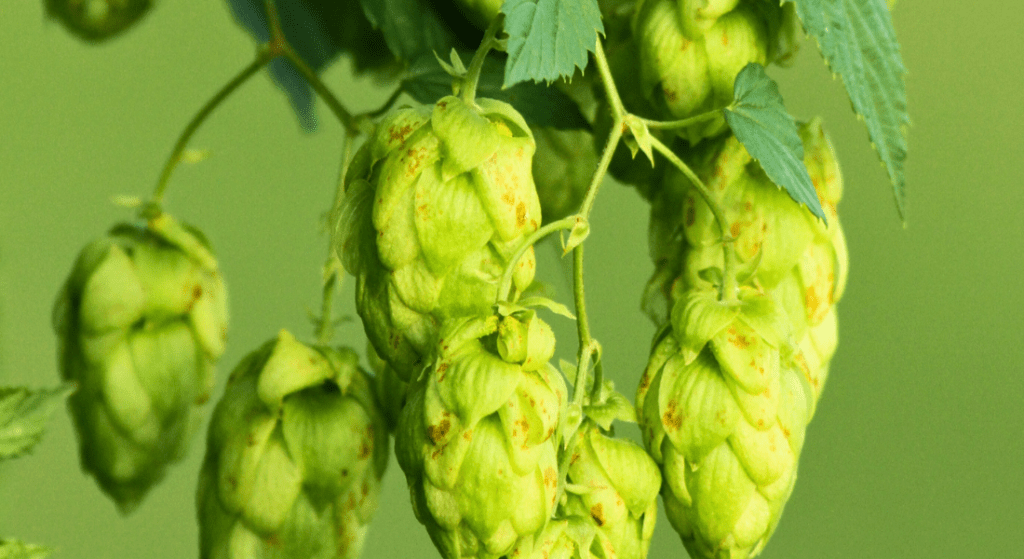Welcome to the world of brewing excellence, where the Challenger hop takes center stage. As a versatile and dual-purpose hop, Challenger has been making waves in the brewing community since its release in 1972. In this comprehensive guide, we will delve into the intricate details of Challenger hop pellets, exploring their aroma, flavor profile, and the undeniable impact they can have on your brew. Whether you’re a seasoned brewmaster or a novice exploring the art of brewing, this article is your gateway to unlocking the potential of Challenger hops.
The Essence of Challenger Hops
Challenger hops, with their rich history dating back to 1972, have emerged as one of the top hops grown in the UK. Bred at Wye College, these hops are well-suited for classic British ales and lagers, making them a favorite among brewers seeking a versatile ingredient for various styles.
Challenger is a dual-purpose hop, offering both bittering and aroma qualities. With alpha acids providing stability during the boil, the floral and citrus character adds a pleasant touch to the brew. Considered a bittering hop, Challenger also brings spice and a rounded bitterness, making it a valuable addition to a wide range of beer styles.
In the next sections, we’ll explore the specific characteristics that make Challenger hops a standout choice for brewers, from its aroma and flavor profile to its dual-purpose versatility. Whether you’re aiming for a traditional English ale or experimenting with contemporary brewing styles, Challenger hops are your gateway to brewing excellence.

Brewing with Challenger: Aroma and Flavor
The aroma of Challenger hops is a defining feature that sets it apart in the brewing world. The floral notes, coupled with a hint of citrus, give your brew a distinctive character that is both inviting and refreshing. As you open a bag of Challenger hop pellets, the aromatic profile is a preview of the sensory journey your beer is about to embark on.
When it comes to flavor, Challenger hops deliver a complex profile that enhances the overall taste of your brew. The spicy and fruity undertones, combined with the pleasant floral and citrus character, create a harmonious blend that complements a variety of beer styles. Whether you’re brewing a traditional English ale or experimenting with new flavors, Challenger hops provide a versatile canvas for your creative expression.
To maximize the impact of Challenger hops in your brew, understanding substitution options is key. Experimenting with different hop varieties can lead to unique flavor combinations and help you tailor your beer to your preferences. In the following sections, we’ll delve deeper into the specifics of aroma, flavor, and substitution possibilities with Challenger hops.
Challenger Hop: From Planting to Brew
The journey of Challenger hops from planting to brew is a fascinating exploration of cultivation, breeding, and the art of brewing. Understanding the origins of these hops sheds light on their unique characteristics and why they have become a staple in the brewing community.

Challenger hops are cultivated with care, and their growing conditions play a crucial role in the final product. With a lineage that includes Northern Brewer and German hops, Challenger brings together the best of both worlds, resulting in a hop variety with good growing characteristics and adaptability to various climates.
Breweries worldwide have embraced Challenger hops, incorporating them into a wide range of beer styles. The collaboration between hop farmers and brewers ensures that Challenger hops are consistently of high quality, contributing to the success of countless brews. As we explore the planting process, breeding history, and brewery preferences, you’ll gain a deeper appreciation for the journey of Challenger hops from the fields to your brew kettle.
Hop Profile Breakdown: Bittering and Aroma
Challenger Hops in Brewing Styles
Challenger hops have found a comfortable home in a variety of brewing styles, from classic English ales to modern interpretations of beer. Understanding how to best use Challenger hops in different styles allows brewers to unlock the full potential of this versatile ingredient.
In traditional English ales, Challenger hops provide a bridge between history and innovation. Their floral and citrus character complements the malt backbone, creating a well-rounded and enjoyable beer. Adapting Challenger hops for lagers showcases their versatility, as they bring a unique twist to lighter beer styles.
For those venturing into modern brewing styles, Challenger hops offer a canvas for experimentation. Incorporating them into IPAs, pale ales, or even brown ales provides a fresh perspective on classic styles. The fruity character, coupled with the spicy undertones and a hint of green tea, adds layers of complexity that appeal to contemporary beer enthusiasts.
In the upcoming sections, we’ll explore best practices for using Challenger in specific brewing styles, ensuring that you can confidently integrate this exceptional hop into your brewing repertoire.
Brew Shop Essentials: Challenger Hop Pellets
Looking to stock up on beer hops for your brewing projects? Consider purchasing Challenger hop pellets in bulk to ensure you have an ample supply on hand for your next brew session. Brew shops play a vital role in providing brewers with high-quality beer hops, including Challenger hops, which are essential for creating exceptional beer. Whether you’re a seasoned brewmaster or a homebrewing enthusiast, buy bulk hops offers convenience and cost-effectiveness, allowing you to focus on crafting your perfect brew without worrying about running out of supplies.
Challenger Hop: A Dual-Purpose Wonder
One of the defining features of Challenger hops is their dual-purpose nature. As a dual-purpose hop, Challenger offers both bittering and aromatic qualities, making it a versatile and sought-after ingredient for brewers worldwide.
The bittering characteristics of Challenger hops are evident in their alpha acids, providing stability during the boil. This makes them well-suited for achieving the desired bitterness levels in a variety of beer styles. Additionally, Challenger hops have also been considered a bittering hop, contributing to the overall complexity of the brew.
The dual-purpose versatility of Challenger hops extends beyond bitterness. When used for aroma, Challenger hops impart a pleasant floral and citrus character to the beer. This duality opens up a world of possibilities for brewers, allowing them to experiment with different styles and flavor profiles.
In the following sections, we’ll delve into the specific aspects of Challenger hops as a dual-purpose wonder, exploring how they can be harnessed for both bittering and aroma to elevate your brewing experience.
Challenger Hops: A Journey from Wye College to Your Brew Kettle
Understanding the historical journey of Challenger hops adds depth to the brewing experience. Bred at Wye College and released for commercial use in 1972, Challenger hops have evolved from a promising new variety to becoming one of the top hops grown in the UK.
Wye College, with its rich history in hop breeding, played a pivotal role in the development of Challenger hops. The lineage, including Northern Brewer and German hops, contributes to the unique qualities that set Challenger apart. Commercial release marked a significant milestone, as Challenger went on to become a staple in breweries around the world.
As we explore the journey from Wye College to your brew kettle, you’ll gain insights into the dedication and craftsmanship that go into cultivating this exceptional hop. Whether you’re a history enthusiast or simply curious about the origins of your brewing ingredients, the story of Challenger hops is sure to captivate.
Challenger vs. Northern Brewer: Exploring the Differences
While both Challenger and Northern Brewer hail from Wye College and share a common lineage, there are distinct differences between these two hop varieties. Understanding these differences allows brewers to make informed choices based on their desired flavor and aroma profiles.
Challenger and Northern Brewer offer contrasting flavor profiles that cater to different brewing styles. The aroma distinctions between the two hops provide brewers with options to tailor their beer to specific preferences. Whether you’re brewing a traditional English ale or experimenting with unique flavor combinations, knowing the differences between Challenger and Northern Brewer is essential.
In the upcoming sections, we’ll explore the nuances of Challenger and Northern Brewer, providing insights into how these hops can be used individually or in combination to achieve the desired results in your brew.
Challenger Hops: Tips for Planting and Growing
For brewers who crave a hands-on approach to their craft, planting and growing Challenger hops can be a rewarding experience. Understanding the ideal conditions for planting, as well as cultivation tips, ensures a successful harvest and a bountiful supply of this exceptional hop.
Challenger hops are known for their good growing characteristics and adaptability to various climates. Whether you’re a homebrewer with a small garden or a commercial hop farmer, these tips for planting and growing Challenger hops will guide you through the process. From resistant qualities to troubleshooting common issues, you’ll be equipped with the knowledge needed to nurture your Challenger hop plants from seed to harvest.
As we explore the intricacies of planting and growing Challenger hops, you’ll discover the joy of cultivating your own brewing ingredients and the satisfaction of incorporating homegrown hops into your next batch.
Conclusion: Brewing Excellence Unleashed
In conclusion, Challenger hops stand as a testament to the artistry and innovation within the brewing community. From their origins at Wye College to becoming one of the top hops grown in the UK, Challenger hops have carved a niche for themselves in the world of brewing.
As you embark on your brewing journey with Challenger hop pellets, remember the dual-purpose wonder they offer. The aromatic floral and citrus character, coupled with the bittering stability during the boil, make Challenger hops a versatile and reliable choice for brewers of all levels.
In your pursuit of brewing excellence, consider the tips and insights shared in this guide. Whether you’re aiming for a classic English ale, experimenting with new brewing styles, or cultivating your own Challenger hops, the world of brewing is as diverse and exciting as the flavors you can create.
Key Takeaways
- Versatility: Challenger hops are a dual-purpose variety, offering both bittering and aromatic qualities, making them suitable for a wide range of beer styles.
- Aroma and Flavor: The floral and citrus character of Challenger hops, combined with spicy undertones, adds complexity to your brew, enhancing both aroma and flavor.
- Planting and Growing: Challenger hops thrive in various climates, and understanding the ideal conditions for planting ensures a successful harvest. Resistance to common issues makes them a reliable choice for hop cultivation.
- Brewing Styles: From traditional English ales to modern interpretations, Challenger hops can be adapted to different brewing styles, providing brewers with creative flexibility.
- Brew Shop Essentials: Selecting high-quality Challenger hop pellets from reputable brew shops ensures freshness and contributes to the overall success of your brew.
- History and Heritage: The journey of Challenger hops from Wye College to your brew kettle adds a historical dimension to your brewing experience, connecting you with a rich tradition of hop breeding.
Embark on your brewing adventure with Challenger hops, and let the unparalleled aroma, flavor, and versatility elevate your creations to new heights. Cheers to brewing excellence!




